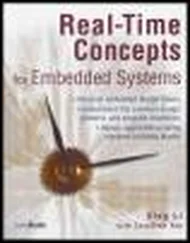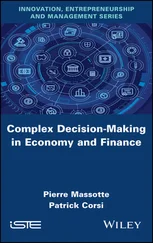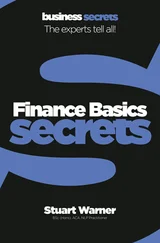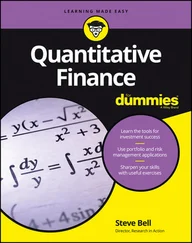Josh and Shamir launched a website saying, “Hey, we're going to build a better bank. If you like the idea, drop your email and we'll add you to the waiting list.” 200,000 people signed up before the company launched a product.
Simple offered a number of innovative features, including displaying a “safe to spend” amount, to help customers stay on budget, and also put a great deal of thought into the customer experience, including customer service, and both Shamir and Josh logged many hours and late nights helping their early customers solve problems. Simple was ultimately sold to the global bank BBVA.
Founded: 2011
Valuation: $418 million
Number of employees: 49
Banking consultant Brett King launched Moven in 2011 with an emphasis on mobile-first banking. King and Moven were strong advocates for mobile payments, and delivered stickers for customers to use with point-of-sale devices years before iPhones were NFC-capable. Moven's app allowed other banks’ card to be linked to it, and delivered more insights and context around those cards and their fees than the issuing banks themselves.
Still privately held, Moven's business focus has moved from consumer-focused to enterprise, and counts several global banks as its customers.
In 2009, Brett King was a consultant and newly minted author of a book about the future of banking called Bank 2.0:
I was on the book tour talking about banking and how it would evolve with technology. I was talking about the fact you'd be able to download your bank account in the future. It'll be embedded in your phone, you'll pay with your phone. It'll give you advice and coach you on money. This is the vision I was talking about associated with my book. And I was speaking to a bunch of VCs from California and they said, “You know, banks aren't going to do this. So who's going to do it?” And I said, “I will.” And literally that afternoon, I went home and registered the domain movenbank.com, which became Movenbank, which then would drop the bank and it became Moven. That was August the 18th, 2010. Now, at the time, there was no such word as neobank or challenger bank. Josh and Shamir at Simple and myself, we would often talk on the phone and collaborate because there was just no one else doing this stuff back in the day. And so we called ourselves nonbank banks at that time. And then the term neobank, I think Dave Birch (author and commentator on digital financial services) came up with that one.
King continued:
We were the first mobile direct bank in the world. We were at least the first to offer a debit card from an in-app application for a bank account for Moven. We launched that capability in 2012. We had a bunch of other firsts we did. We were the first mobile banking app that used the home page differently than just listing your accounts. We put our spending meter and money path on the app, the financial wellness focus. We were the first to do contactless. This was pre-Apple Wallet and Google Pay, so we stuck a contactless sticker on the back of your phone that was RFID-based initially, then there was an NFC tag. We were the first to do a real-time receipt with categorization for your expenses, which we had by 2013. So we really did pioneer the space. But the problem is that we were too early. In 2013, we had a quarter of a million customers in the United States.
King believes that, despite its traction, Moven was too early, but that its features were influential on neobanks that followed, as well as on traditional banks, and remain selling points for Moven's current iteration as a banking-as-a-service tool.
The gap in the market simply was that the bank account would evolve to be contactless, cloud-based, and would coach you on your money. The biggest selling point we used to talk about were things like, you go to a store and you swipe your plastic card, and you don't know what your balance is. You don't know whether the transaction was good or not. The only thing you know is whether the transaction was approved or not. There's not a lot of context in terms of day-to-day spending that will help you make decisions. So now that's how we position Moven and initially the idea was that it would give you smart feedback. If you're getting out of a taxi and you get a receipt on your phone that says, “Hey, you spent $200 on Uber this month” or you come out of Starbucks and it says, “Hey, you spent $400 on dining out and coffee this month” and that elicits behavioral change because most people just simply aren't aware that they spend that sort of money on those activities. So raising the awareness level was a tool to change behavior and make people financially healthier. And that's the way Moven has always worked.
Why did these early neobanks gain traction? They focused on the technology, making it extremely simple to use, and then doubled down on the customer experience. The concept of neobanks wasn't only gaining traction in the US though. Across the pond, neobanks like Fidor, Monzo, Starling and N26 are prominent European examples as well.
Chief research officer at Cornerstone Advisors, Ron Shevlin, known for his contrarian opinions on many subjects, argues that neobanks did not actually gain significant traction compared with bank competitors. Shevlin said:
I would argue they didn't gain traction, but the gap that they perceived, one perception was right and one was wrong. The wrong perception they had was that consumers didn't want to do business face-to-face, person-to-person. The gap that they were correct in was that there's a way to reduce the cost of the delivery of financial services by not going through the branches.
In other words, digital works, but not because customers don't want to see other humans. Where neobanks succeed, according to Shevlin, is in serving specific niches, such as Aspiration, which serves environmentally conscious customers, or Panacea, which serves physicians starting out in the field.
The neobanks were being formed after years of studying the industry, using contemporary technology and in some cases, operating with updated business models. But neobanks are not necessarily vertically integrated companies that own every piece of the technology stack. They often rely on partnerships with other technology companies that specialize in particular products, and often have banks at the bottom of the stack. Using bank licenses has been an important early step in both Europe and the US. Some of these companies have ultimately gone on to acquire their own banking licenses.
Despite initial traction and a lot of venture funding into the early neobanks, few have gained the traction significant enough to seriously challenge banks, let alone the megabanks with millions of users. The landscape has shifted a bit in recent years and today, neobanks such as Chime (US, valued at $35 billion), NuBank (Brazil, valued at $41.5 billion at the time of their NYSE IPO), Revolut (World, valued at $33 billion), and Tinkoff (Russia, valued at $22.5 billion) are gaining serious traction and, in general, the industry defines them as successful. Each neobank listed above uses varying models to arrive at relatively full feature sets for their customers.
What did those successful neobanks do differently? When asked about NuBank, Chris Skinner, author, commentator and founder of The Finanser blog, believes they have been particularly successful because they reached out for financial inclusion while many banks in the region still do not understand what it means. Financial inclusion in its most simple form is offering banking services to people who cannot afford it. Some 20% of NuBank's customers are individuals who couldn't access banks before. Many neobanks currently try to compete with traditional banks in a similar way. In today's world, the customer needs digital connectivity. Bunq, Starling, and Tinkoff are a few examples of neobanks who understand this concept and are successful in creating digital connectivity to customers who have not been served before.
Читать дальше












